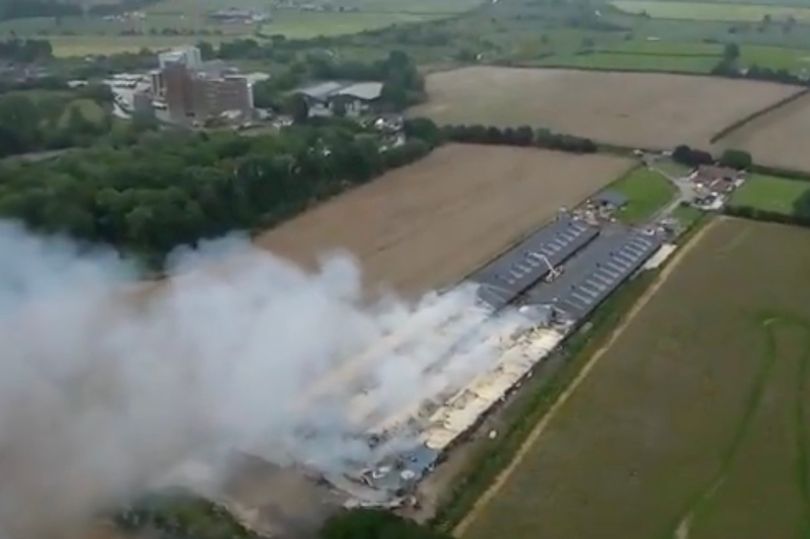
Around 50,000 chickens have been killed following a substantial blaze in two poultry sheds in East Yorkshire.
The fire broke out at shed on a farm in Driffield on Friday (2 July), before spreading to another unit nearby.
Humberside Fire and Rescue Service said that a total of 45 firefighters were at the scene.
According to the fire service, the substantial blaze was caused by 'accidental ignition'.
A spokeswoman for the Humberside Fire and Rescue Service said: "The fire investigation concluded yesterday evening and decided it was accidental ignition.
"[It was] two poultry houses, approximately 100m by 20m, each containing 25,000 hens destroyed by fire."
CONTROL - Drone footage from the incident at Driffield. #RedWatch pic.twitter.com/0VUJmXgnak
— Humberside Fire & Rescue (@HumbersideFire) July 2, 2021
The cost of farm fires in the UK reached a five-year high in 2019, totalling over £49m, according to the most recent claims statistics by NFU Mutual.
Electrical faults accounted for over half the total last year, followed by arson which rose by 40 percent to £9 million.
How can I reduce the risk of fire?
NFU Mutual has offered farmers and landowners tips on how to lower the risk of fires:
Fire prevention:
• Get electrical systems and equipment regularly inspected by a competent electrician
• Don’t overload electrical systems – and avoid using multigang connectors
• Ensure there are sufficient fire extinguishers for the size of buildings and that they are inspected regularly to ensure they are in the right location and condition
• Ensure staff and adult family members know the location of fire extinguishers and how to use them
• Reduce the risk of arson by fencing off straw stacks and farm buildings
• Use CCTV cameras on straw stacks and farm buildings, along with warning signs to deter arsonists
• Store hay and straw away from equipment that could give off heat (e.g. hot vehicle engines, overhead lights) and at least 10m from other buildings
• Put in place an evacuation plan for staff and livestock
• Store petrol, diesel and other fuels in secure areas
• Pre-plan hot works such as welding in clear areas
• Ensure you have safe, designated smoking areas
• Ensure you can direct emergency services to the exact location of fires e.g. download the what3words app which pinpoints specific 3m x 3m locations
• Ask your local Fire and Rescue service to visit to check water supplies and access routes
If a fire breaks out:
• Make sure everyone evacuates the immediate area and remains in a safe location
• Call the Fire and Rescue Service without delay
• If possible, send someone to the farm entrance to direct the Fire and Rescue Service to the fire
• Prepare to evacuate livestock but only if safe to do so should the fire spread
